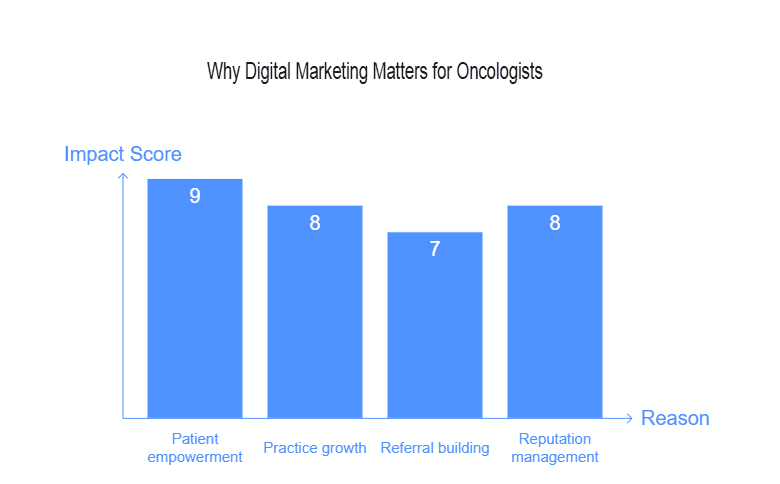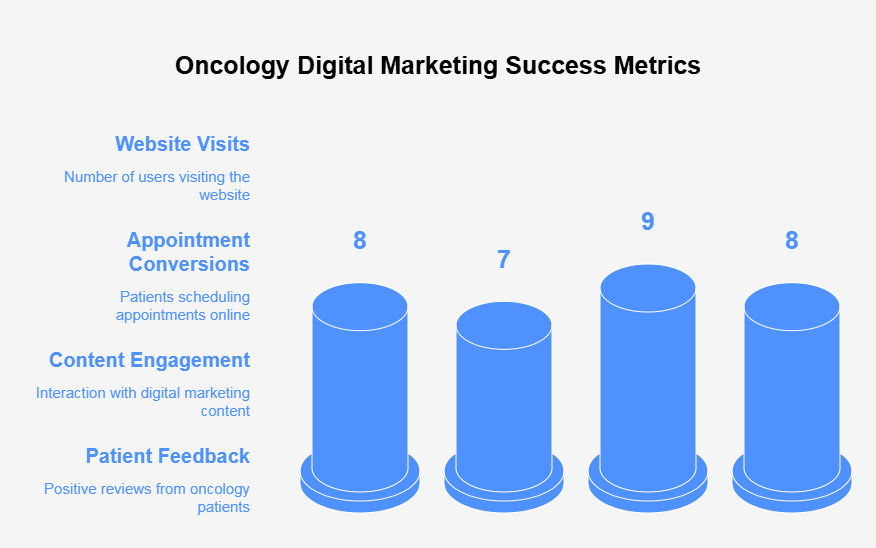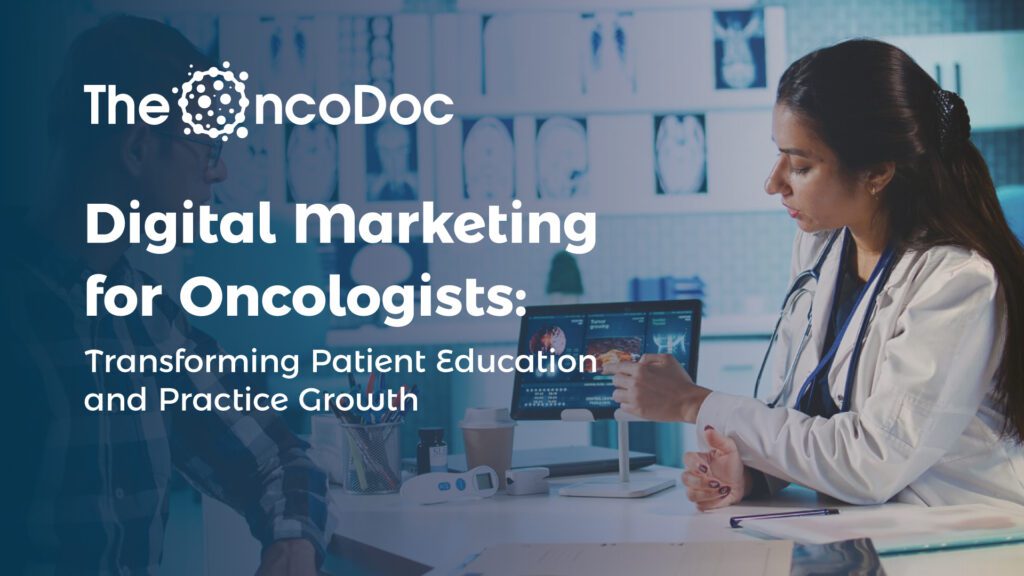Introduction: A Digital Shift in Oncology Engagement
Digital marketing has redefined how healthcare is delivered and consumed, and oncology is no exception. Oncologists today face increasing demands not only in clinical care but also in patient communication, awareness building, and practice visibility. Digital platforms present powerful opportunities to reach patients with reliable information, clarify complex treatments, and connect with peers. Yet, many oncologists underutilize these tools.
This article explores how digital marketing—done strategically and ethically—can support oncologists in educating patients, growing their practices, and becoming thought leaders in a highly specialized domain.
Why Digital Marketing Matters for Oncologists
Cancer patients and their families often turn to the internet as their first source of information. Unfortunately, they’re often met with confusing, outdated, or misleading content. Oncologists have the chance to counter misinformation and provide authoritative guidance by having a strong digital presence.
Here’s why digital marketing is important for oncologists:
- Patient empowerment: Patients are more involved in their care decisions. Accurate content helps them feel informed and less anxious.
- Practice growth: Search engines, reviews, and social media significantly influence how new patients choose providers.
- Referral building: Digital tools make it easier to connect with other specialists for multidisciplinary care.
- Reputation management: Online platforms are key to managing professional image and credibility.

Effective Digital Marketing Tactics for Oncologists
To gain meaningful traction online, oncologists need to combine clinical knowledge with strategic content. Below are key approaches tailored to oncology practices.
1. Educational Blog Posts and Articles
Publishing content that explains treatment types, risk factors, and post-treatment care can demystify oncology for patients. Topics can include:
- Differences between chemotherapy, immunotherapy, and radiation
- Lifestyle tips during cancer treatment
- How to interpret diagnostic reports
Use simple language and include visuals like infographics. Consistent posting builds SEO and positions the oncologist as a trusted source.
2. Short-Form Video Content
Videos offer a personal way to communicate complex medical topics. Oncologists can:
- Share quick tips on side-effect management
- Explain treatment protocols in under two minutes
- Provide insights into clinical trials or new drugs
These videos can be distributed via YouTube, Instagram, or patient portals. Subtitles and concise captions help retain attention.
3. Search Engine Optimization (SEO)
SEO ensures content is discoverable by patients searching online. Include keywords such as “breast cancer specialist near me” or “best treatment for stage 3 lung cancer.”
Optimizing Google My Business listings, using schema markup for medical content, and maintaining mobile-friendly websites all contribute to better rankings.
4. Email Newsletters for Patient Follow-Up
Email remains a cost-effective channel for communication. Oncology practices can:
- Send follow-up care reminders
- Share updates on treatment options or health tips
- Invite patients to webinars or Q&A sessions
Ensure content is compliant with privacy laws like HIPAA or India’s DPDP Act.
5. Webinars and Live Q&A Sessions
Interactive webinars give patients a chance to engage directly with oncologists. Hosting sessions on topics like early cancer detection or survivorship care can increase trust and visibility.
Collaborating with patient advocacy groups or other specialists can widen the audience.
6. Social Media with Sensitivity
LinkedIn is ideal for sharing professional insights, research updates, or industry news. Instagram and Facebook can humanize the practice through:
- Patient success stories (with consent)
- Awareness campaigns (e.g., for World Cancer Day)
- Behind-the-scenes clinic updates
All posts should follow ethical marketing guidelines and avoid sensationalism.
7. Patient Testimonials and Reviews
Encourage satisfied patients to leave reviews on Google or healthcare platforms like Practo. Authentic testimonials reinforce trust and help potential patients feel confident in choosing the oncologist.
8. Collaborations with Health Portals
Partnering with credible medical platforms can amplify reach. Oncology content published on platforms like WebMD, Medscape, or regional portals ensures broader dissemination and higher search credibility.
Ethical Considerations in Oncology Marketing
Marketing in oncology must always prioritize patient well-being. Best practices include:
- Avoiding exaggerated cure claims
- Being transparent about qualifications and results
- Respecting patient privacy in testimonials or photos
- Disclosing any partnerships or sponsorships
Adhering to medical advertising guidelines from local councils or associations helps build long-term trust.

Measuring Success: Metrics That Matter
Rather than focusing on vanity metrics, oncologists should track:
- Website visits from organic search
- Conversion rates (e.g., appointment bookings)
- Engagement rates on content (likes, comments, shares)
- Patient feedback regarding content clarity and usefulness
Using tools like Google Analytics, SEMrush, or healthcare-specific CRMs makes data analysis more actionable.

Conclusion: Building Influence While Educating Patients
Digital marketing is more than just a branding tool- it’s an avenue for education, connection, and advocacy. For oncologists, it provides a way to reach beyond the clinic and into the lives of patients navigating difficult journeys.
With consistent, ethical, and evidence-based content, oncologists can position themselves not just as clinicians, but as credible voices in the larger fight against cancer. By embracing digital strategies, they open new doors for patient engagement, practice growth, and professional influence in an evolving healthcare landscape.
The Oncodoc team is a group of passionate healthcare and marketing professionals dedicated to delivering accurate, engaging, and impactful content. With expertise across medical research, digital strategy, and clinical communication, the team focuses on empowering healthcare professionals and patients alike. Through evidence-based insights and innovative storytelling, Hidoc aims to bridge the gap between medicine and digital engagement, promoting wellness and informed decision-making.



